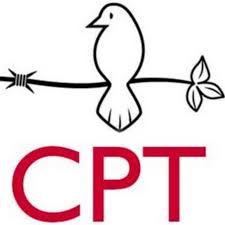The Different Faces of Society
Teachers demanding their salaries through protests in the city of Sulaimani in 2016. Photo by; Rezhiar Fakhir
By: Peggy Gish
“So, what’s it like for the people in Iraqi Kurdistan?” my friends back home ask me over the Internet, now that I’m back on the CPT Iraqi Kurdistan team.
My answer would probably start with explaining that, of course, Iraqi Kurdistan and its government, the KRG (Kurdistan Regional Government) continues to be the most secure and stable area of Iraq. It’s not so far in miles from Mosul, but is fairly removed from the battles with the “Islamic State.” From outside the country, it may appear that life in the KRG is going smoothly, but from here, one can see that the average Iraqi Kurd is beset with various social challenges.
The economy is a big one. The first thing many Kurdish people mention is that they are in an “economic crisis.” Teachers and lower-level government workers--people drawing a paycheck from the KRG--except for the Peshmerga and other security forces, whose salaries are partially provided by the U.S. and their allies--have in the past year, received just a fraction of their salaries, or in many months, none, yet are being forced to continue working their jobs to keep society running. Kurdish officials publicly maintain that they are bankrupt and don’t have enough funds. They also say the KRG is still caring for the needs of displaced persons coming in from other areas of the country and several large refugee camps for Syrians. Kurds I spoke to, however, say that most of the expenses of these camps are covered by international and private aid agencies.
What I hear is that, yes, the price of oil on the world market has dropped. And, yes, the KRG no longer receives a percentage of Iraqi oil revenues from the Iraqi Central Government in Baghdad. This was cut off a couple years ago, when the KRG started selling and keeping the profits of oil produced in the Kurdish region. The Central Government also stopped paying the salaries of the Kurdish Peshmerga fighters after the KRG insisted on keeping its control over them. Kurds outside the government tell me that the KRG has enough revenues to pay their employees, but that money is being siphoned off and disappeared through mass corruption of government parties and leaders.
Another problem still plaguing Iraqi Kurdish society, is something we learned about back in late 2006, when our team moved here from Baghdad, and were invited to rallies protesting the attacks on citizens who spoke out publicly against corruption and the lack of free speech. Unfortunately human rights violations are still common.
The teachers’ situation is a recent example of this kind of oppression. For several months this past school year, teachers went on strike. Almost daily, thousands of teachers nonviolently protested and marched on the streets, demanding their pay. This winter, security personnel kidnapped, beat, burned the cars, or threatened the lives of several of the leaders of the marches. Eventually authorities violently crushed the peaceful protests and forced the teachers, under threat, to return to their classrooms.
It is tragic that at a time when Kurdish fighters are being applauded by worldwide media in their successful battles against ISIS in Iraq, many Kurdish people feel oppressed by their own leaders. It is sad to see the longed sought after dream of Kurdish self-determination in Iraq being plagued by internal divisions and repression.
I have learned, here, and back in my home country, that societies have at least two faces. And many of us have found ways to navigate between the two very real sides. The first involves the tragic realities of our governments’ and economic systems’ abusing their power and crushing the vulnerable inhabitants and the noble aspirations of the common hard-working citizen. The second is the reality of a beautiful culture and people that continues to care for and sacrifice for the well-being of their children and neighbors. It involves those who rise above local prejudices, rivalries, and power-seeking to work for reconciliation and for more peaceful, just, and caring communities. Both are real descriptions of what is happening in society here and at home, but it is in walking alongside the people in this second side that offers hope for a life-giving future.
